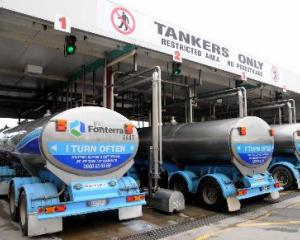In March, the dairy co-operative shipped 229,000tonnes, but continued growth in global demand for dairy products, combined with record milk production early this season, has led to another spike.
In October, Fonterra was granted a temporary increase in loading limits to help manage the big increase in milk flows throughout the country, which had put pressure on milk collection, manufacturing and the supply chain.
Last month, the co-operative closed the door on an export container every 2.7 minutes - 546 containers a day. Its exports accounted for more than a quarter of all New Zealand exports.
A good autumn and mild winter created optimal grass growing conditions ahead of the 2011-12 season, helping create a wave of milk, which was up about 10% on a daily basis during the peak flow in late September through to November, trade and operations managing director Gary Romano said.
While conditions were good overall, farmers faced extreme challenges, including a near nationwide dumping of spring snow and flooding in some regions.
"Our farmers have coped tremendously, not just with bad weather but also the record milk flow, which peaked at more than 80 million litres a day"Our teams have gone the extra mile to manage the huge amount of milk this season and get value out of every drop of milk. From the moment we collect the milk, process it, pack it, store it, ship it - our people have put in a huge effort; they haven't stopped," Mr Romano said in a statement.
Demand for high-quality dairy products was still looking strong, with Southeast Asia, China, the Middle East and North Africa driving the growth in exports.
Dairy products were becoming increasingly important in those markets as people became wealthier and wanted access to more nutritious foods, he said.






